Merry Christmas and a Happy New Year to the HIStalk crowd. I wish you the joys of the season!
News 8/27/14
Top News
The Department of Defense issues an RFP for its $11 billion EHR replacement. Dim-Sum brought up a great point in our conversation the other day: the government requires that a significant chunk of the bid be awarded to companies owned by women, minorities, and veterans. That means a lot of companies beyond the winning primary contractor and EHR vendor will earn business. Stay tuned for Dim-Sum’s September 18 HIStalk webinar. I didn’t think of it until this minute, but I bet he could provide a good overview of how to do business with the DoD – that would give small players time to get their ducks in a row.
Reader Comments
From Medwreck: “Re: cloud. I’m on a life sciences panel for an upcoming cloud-based content management software conference. Will all healthcare hosting and apps go the way of the cloud at some point?” Yes, for the most part. Data center operation isn’t the core competency of providers, security challenges are exceeding local resource capabilities, access to bandwidth is nearly universal, and cloud providers can offer higher reliability and recoverability. Assuming the price point is comparable or favorable and the cloud provider offers solid service levels, it makes no sense for providers to run data centers, just as it makes no sense for them to run electrical generators or wells when electric and water companies can do it better and with the higher efficiency that specialization brings once the grid has been established. The exceptions will be applications from small vendors that don’t offer them via the cloud or charge excessively for that option, which won’t be the case for long because they’ll be out of business.
HIStalk Announcements and Requests
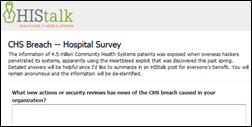
The CHS Heartbleed-related breach is getting a lot of interest. I’m putting HIStalk Advisory Panel reactions together for a post next week since I suspect many hospital IT people are scrambling to explain what it means to their peers. Please add your thoughts here if you work for a hospital.
Listening: masterful early 1970s progressive rock from Peter Gabriel-led Genesis (Phil Collins was just drumming in overalls then – it was later he moved out front to lead the band to bubblegumdom) and the even more talented but criminally underappreciated Gentle Giant and the brilliant Kansas. Forty-year-old music shouldn’t sound this good and the now-balding and rotund 64-year-old Gabriel shouldn’t have been quite so androgynously attractive in video from his early 20s.
Webinars
August 27 (Wednesday) 1:00 p.m. ET. Enterprise Data – Tapping Your Most Critical Asset for Survival. Presented by Encore, A Quintiles Company. Presenters: Jonathan Velez, MD, FACEP, CMIO, Hartford Healthcare; Randy Thomas, Associate Partner, Encore, A Quintiles Company. This first of a webinar series called “It’s All About the Data” will describe the capabilities provider organizations need to become data driven. The presenters will provide an overview of the critical role of an enterprise data strategy, creating the right data from source systems beginning with implementation, real-world data governance, how to avoid “boiling the ocean” with an enterprise data warehouse, and the role of performance feedback to transform analytics insights into improved outcomes and efficiencies.
September 4 (Thursday) 2:00 p.m. ET. MU2 Veterans Speak Out: Implementing Direct Secure Messaging for Success. Presented by DataMotion. Moderator: Mr. HIStalk. Panelists: Darby Buroker, executive director of health information exchange, Steward Health Care; Anne Lara, EdD, RN, CIO, Union Hospital of Cecil County, MD; Andy Nieto, health IT strategist, DataMotion; Mat Osmanski, senior application analyst, Steward Health Care; Bill Winn, PhD, Meaningful Use service line executive, Navin, Haffty & Associates. Panelists will discuss the strategy and tactics of meeting the transitions of care requirements for MU2, including assembling the team, implementing Direct Secure Messaging, getting providers on board, and reporting results.
September 11 (Thursday) 1:00 p.m.ET. Electronic Health Record Divorce Rates on the Rise — The Four Factors that Predict Long-term Success. Presented by The Breakaway Group, A Xerox Company. Presenters: Heather Haugen, PhD, CEO and managing director, The Breakaway Group, A Xerox Company; Bill Rieger, CIO, Flagler Hospital, St. Augustine, FL. Many users are considering divorcing their EHR as dissatisfaction increases. Many are spending 90 percent of their time and resources on the wedding (the go-live) instead of the long-term commitment to new workflows, communication, education, and care outcomes (the marriage). Hear more about the findings of research published in “Beyond Implementation: A Prescription for Lasting EMR Adoption” about EHR adoption and success factors. Registrants get a free electronic or paper copy of the book.
The Breakaway Group created this fun intro to their September 11 webinar.
Acquisitions, Funding, Business, and Stock


Premier, Inc. reports Q4 results: revenue up 17 percent, adjusted EPS $0.34 vs. $0.29. The company also announced that it will acquired Raleigh, NC-based supply chain analytics vendor Aperek for $48.5 million. It’s Premier’s third acquisition so far this year and the announcement hinted at more to come, which CEO Susan DeVore suggested when I interviewed her last month.

AirStrip raises $25 million in funding. New investors include The Gary and Mary West Health Investment Fund, Leerink Partners, and AirStrip customers Dignity Health and St. Joseph Health.

Visage Imaging’s parent company, Australia-based Pro Medicus Limited, discusses FY2014 results.
Sunquest owner Roper Industries announces two medical acquisitions: Strategic Healthcare Programs (post-acute care analytics) and Innovative Product Achievements (surgical scrub dispensing).
Columbia City, IN-based supply chain software vendor Solstice Medical secures $2.5 million in funding, $1 million of that from a state investment program for potentially high-growth businesses.
Sales

Greater Hudson Valley Health System (NY) chooses Strata Decision’s StrataJazz for complete financials.

Baptist Health (FL) selects Explorys for analytics.

Flagler Hospital (FL) chooses MModal for speech-driven clinical documentation.
Integrated Health Network (NJ) selects eClinicalWorks EHR and population health management for its 45 practices.
North Carolina Pediatric Associates will deploy NextGen Ambulatory EHR, PM, and patient portal.
People

UPMC EVP/CIO Dan Drawbaugh will resign after 30 years with the health system to pursue unspecified other professional interests. SVP Ed McCallister will serve as interim CIO. Drawbaugh was one of the highest-paid non-profit CIOs in the country, earning $1.6 million in 2012.

Emanuel Medical Center (GA) promotes David Flanders from CIO to COO.

CMS names Kevin Counihan (Access Health CT) to the newly created position of CEO of Healthcare.gov. Connecticut’s exchange, built with minimal functionality to meet ambitious deadlines, was one of few state-developed exchanges that worked, to the point that other states with overly ambitious visions and questionable contractors asked it for help. Earlier this week, when asked if the federal government would benefit from Connecticut selling its services to other states, he said:
I think this idea about trying to keep things as efficient and cheap as possible, and simple as possible, has a lot of value whether it’s to a state or to the federal government. And, as I said, I just believe that this is about simplicity and ease in doing everything that either the states or the feds can do to make a complex purchasing decision easy as possible. If there’s opportunities within something that a state has, like Connecticut, I think the feds have to look at it.
Announcements and Implementations
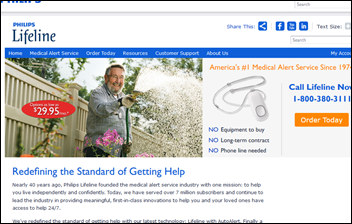
Philips introduces its Lifeline smartphone-based medical alert app for seniors. I didn’t realize that Framingham, MA-based Lifeline Systems was founded in 1972 by a Duke gerontologist on sabbatical, was bought by Philips in 2006 for $750 million, and is now the number one medical alert service with 7 million subscribers.
The NextGen Share HISP solution earns DTAAP and EHNAC accreditation.

Caradigm will offer providers unlimited identity and access management for a single annual all-inclusive price that includes provisioning, single sign-on, and context management for an unlimited number of applications.
3M announces its Coding and Reimbursement System Plus (CRS+) coding system.
Lincor launches an Android-based TV system MediaLINC for education, entertainment, and clinical content delivered to hospital beds via standard HD TV sets.
Imprivata introduces enhancements to Imprivata OneSign Secure Walk-Away that include advanced 3D camera technology, video tracking, and facial recognition.
Government and Politics

The VA will open an RFP for a commercial patient scheduling system in September and will award a contract by the end of the year. VA CIO Stephen Warren says the agency will “acquire a commercial, off-the-shelf scheduling system,” but then oddly adds that it wants a system “tailored specifically for our Veterans.” (the VA always capitalizes “veteran” even though that’s incorrect).
A White House video profiles the first day at work of former Googler Mikey Dickerson, recently named the first administrator of the new US Digital Service under the White House CTO (the departing Todd Park is prominent in the video, sitting beside President Obama). Dickerson also helped revive Healthcare.gov. The government modeled the service after a similar UK one, but skeptics say a lack of clout will probably hamper this effort like it did a couple of previous open government initiatives that everyone has forgotten. Dickerson seems sufficiently nerdy, although working for the White House isn’t nearly as lucrative as banking Google stock options and DC is a very long way from the Silicon Valley. The President brags on camera about the small-team success with Healthcare.gov, not mentioning that its development was the exact opposite with pathetic CMS oversight, political meddling, and poor contracting practices — Todd Park wasn’t brought in until it blew up. It’s a fun video even if it propaganda for a White House program that probably will amount to very little (pardon the redundancy).
A New York Times article exposes Medicare’s nursing home rating as irrelevant, where plush amenities and unaudited self-reported statistics earn high marks for clinically dangerous facilities that have figured out how to game the system. One five-star home was fined the maximum state penalty after a killing a patient in a medication error and despite having twice the average number of consumer complaints and a dozen lawsuits from patients and families. In that facility, residents are often housed three to a room, quality employees are in short supply, and basic supplies are scarce. According to one resident, “If I fell down, they’d pick me up, but that’s about it.” Two-thirds of the 50 homes on a federal watch list for quality still have four- or five-star ratings due to their self-reported staffing and quality numbers.
Tuesday’s HITPC interoperability Workgroup Governance Subgroup suggests five problems (above) that ONC should address through policies or programs. Overall barriers for the quantity of information exchanged were named in responses (a) lack of a national provider directory; (b) inconsistent data sharing laws; (c) DirectTrust accreditation is not universal and is not inexpensive; (d) lack of a common trust bundle for HISPs; and (e) inconsistent data matching methods.

Former FDA Commissioner Andrew von Eschenbach says the agency is holding back innovation by requiring too much red tape for conditional drug approval and by not recognizing the possible benefits of drugs combined with medical devices or diagnostic tests. He also advocates using EHR data along with specific molecular patient characteristics to streamline pre-market testing and post-market surveillance.
Innovation and Research
An Indiegogo campaign for The Defender rape defense system raises far more than its $100,000 goal. It sprays pepper spray, takes a photo of the assailant, connects with a 24-hour response center, and sets off an alarm and flashing light.

Tennis ball boys at the US Open will wear Ralph Lauren’s Polo Tech Smart Shirt for testing as the company plans for a spring retail rollout. An accelerometer, gyroscope, and heart rate monitor are embedded in the shirt, with wires woven into the shirt’s fabric serving feeding them information.
Technology
MOVEO Foundation, which advocates for the use of virtual reality in surgical training, creates a video showing the use of the Facebook-owned Oculus Rift during surgery.
Microsoft claims at a partner conference that several hundred customers have switched from Google Apps to Office 365, displaying a slide of 15 organizations that include University of Colorado Health. Google researched those 15 and found quite a bit of Microsoft inaccuracy, including its listing of UC Health, which had never been a paid Google Apps user. University of Colorado Boulder uses Google Apps exclusively for students and is considering moving faculty to it. I’ll say this: I use Gmail and hate it and the entire Google Apps suite, vastly preferring Office 365 to Google’s ugly, quirky, minimally maintained, and unreliable apps. I use Gmail mostly to read other hosted email accounts, so I should probably just move to Outlook since it now appears to have a web client that doesn’t require a locally maintained Exchange server.
Other
Ice Bucket Challenges have jumped the shark, but are still fun to watch when it’s someone you know. Here is Matt Hawkins of Sunquest, calling out Tee Green of Greenway Health to ice up (or is that ice down?)
Health Affairs offers a short-term solution for the seemingly random pricing of the same test and procedure at different hospitals: cap payments at 125 percent of the price Medicare pays since that price is already adjusted by local cost of living. Then, they say it’s time to dump the AMA-supervised committee (RUC) of mostly specialists who set Medicare prices, which not surprisingly recommends paying more for procedures like they perform and less for primary care and prevention. Not many industries would let a trade group set government-paid prices.
A security expert analyzing the healthcare breaches such as that experienced by Community Health Systems says the suspected China-based group seems to be most interested in stealing oncology data, either to create knockoff chemo drugs or to try to address China’s cancer problems. Patients have already started filing class action lawsuits against the chain. Meanwhile, in more of an old-school breach, ProPublica uncovers the illegally hushed and still-unreported case in which an unvetted Chinese national was hired in 2007 to work in the Arizona Counter Terrorism Information Center and is believed to have returned to Beijing that year with the personal information of 5 million Arizona drivers. Lastly (for today anyway) the Chinese government announces plans to develop an operating system to eventually replace Windows, Android, and iOS.

The information of 595 patients of Steward-owned St. Elizabeth’s Medical Center (MA) is exposed when the personal laptop and thumb drive of a formerly employed physician are stolen from his home. Hospital policy prohibits storing PHI on personal devices. Neither were encrypted.

Greenville Health System (SC) will issue $91 million in bonds, with the proceeds partially used to pay $97 million in Epic implementation costs.
A New Jersey paper describes how for-profit hospital operators turn facilities around (note that IT isn’t on their list, for-profit hospitals being minimally interested in technology outside of the billing area in my experience):
- Buy struggling or bankrupt hospitals cheap.
- Hire well-connected political influencers to get the deal approved.
- Sell the property to investors and lease it back.
- Lay off employees, cut staffing, and use more per-diem workers, especially if buying a bankrupt hospital where union contracts can be renegotiated.
- Squeeze vendors using corporate leverage.
- Streamline and standardize care to get patients out the door faster.
- Cut executive positions and salaries.
- Improve billing and collections.
Fitness tracker Jawbone collects the sleep tracking data of its users (Quantified Someone Else?) and creates this analysis of the Napa earthquake, in which it could even tell how many users were awakened by tremors and didn’t go back to sleep that night. They could probably perform some interesting sexual metrics.

I was thinking about this on a plane recently when the guy in front of me kneecapped me by reclining his seat hard even before takeoff. An altercation between two United passengers forces the flight to divert for an unscheduled landing at O’Hare when a male passenger uses the banned Knee Defender gadget to block the seat in front of him from reclining so he can use his laptop, causing the angry woman in the seat to throw water on him. The irony is that both passengers were in extra-room seats. I can’t blame the guy – I’ve had my laptop screen jammed and nearly broken when the person in front of me decided to recline, which squeezed the laptop under the tray table latch.
Sponsor Updates
- Nuance announces that users of its PowerShare Network have shared 3 billion medical images, with the number growing 30 percent per year.
- PerfectServe announces the formation of its customer advisory panel.
- Also making the Inc. 5000 list run here earlier is Direct Recruiters, Inc.
- Wellcentive releases its 2014 PQRS application.
- The World Economic Forum announces the selection of Health Catalyst as one of 24 global Technology Pioneers.
- Versus discusses the hospital’s responsibility to prevent violence against healthcare workers.
- Administrative Eyecare Magazine features Versus Technology client Key-Whitman Eye Center for its use of RTLS to increase patient volume while reducing wait times.
- The Advisory Board Company recognizes four healthcare organizations for RCM improvements up to $8.2 million.
- CareTech Solutions presents a case study titled “Maximize Uptime with Stretched Clusters” at VMworld 2014 this week in San Francisco.
- Beacon Partners offers seven ways organizations can protect themselves against hackers.
Contacts
Mr. H, Lorre, Jennifer, Dr. Jayne, Dr. Gregg, Lt. Dan, Dr. Travis.
More news: HIStalk Practice, HIStalk Connect.
Get HIStalk updates.
Contact us online.





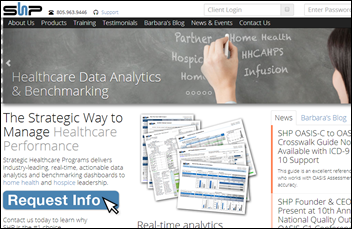

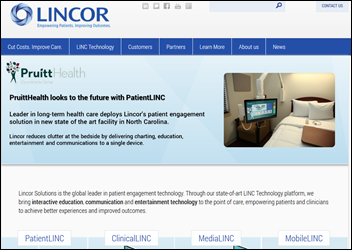

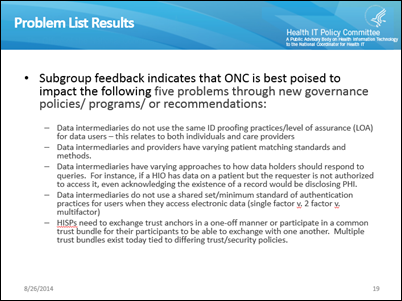
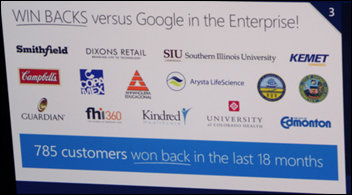

Will AirStrip go public prior to its inevitable acquisition?
Listening: Check out ‘The Infatuations’ from Detroit. It’s like 70’s Motown reborn. I’m from SoCal – no connection to Detroit except love for the music history there.
Mr. H., “Silicon Valley” is like “Foo Fighters”; There’s no “the” in front of it.
I nitpick because I care… : )
While DC may not be Silicon Valley Mr HIStalk, working for the govt can be extremely rewarding. There is more to life than just making a boatload of money, though in this society, it seems as that is what most folks focus on. Providing a public service can be equally, if not more rewarding. You may want to give it a try before dissing such.
Great to hear Genesis with Peter Gabriel mentioned. Long time fan. Peter Grabriel’s Secret World and Growing Up Live are excellent DVDs for your collection. Also check out Steve Hackett (original Genesis guitar player) Genesis Revisited from Hammersmith DVD.
The DoD capitalizes the “V” in Veterans as a sign of respect. Saying that is incorrect, is in fact incorrect. You may have chosen to say that it is “grammatically incorrect.” However, respecting those who have served, even if by simply capitalizing a letter is never “incorrect.”
re: DOD, did Dim-Sum mention HUBZone?
Simply said: there are some places that “Normal” companies won’t go, they are called HUBZone areas. HUBZone designation is awful to get (and keep) because companies can’t game it. It’s not ascribed by ethnic, sexual or military status. HUBZones actually perform their designation by bringing jobs where no typical business would. Credible (audited) performance is the sole basis for an SBA HUBZone designation.
Oddly, some companies do move into HUBZones on purpose. But it seems any company that goes where others won’t has got to be crazy, and then to imagine that such a company could be the best large system support and development outfit – ever… it’s just ludicrous. So I always tell myself “You are not imagining it” whenever the thought comes up.
So the DOD RFP is dictating to whom the bid will go. I guess since the vendor I work for is owned by a male, white blooded American citizen then our company would be considered since we are a minority now in this country. Right?
If your company’s owner is white-blooded, I think he may need to seek Medical attention. It should be more of a reddish color, unless he’s Vulcan.
Having been involved in a procurement process at NIH several years ago, I am well familiar with the minority owned subcontractor requirements of the Federal Government – it was a significant process to line up all those subcontractors and get them on board and committed to participating in the project – and you need to have them engaged before you submit the response – at least we had to oh so many years ago….